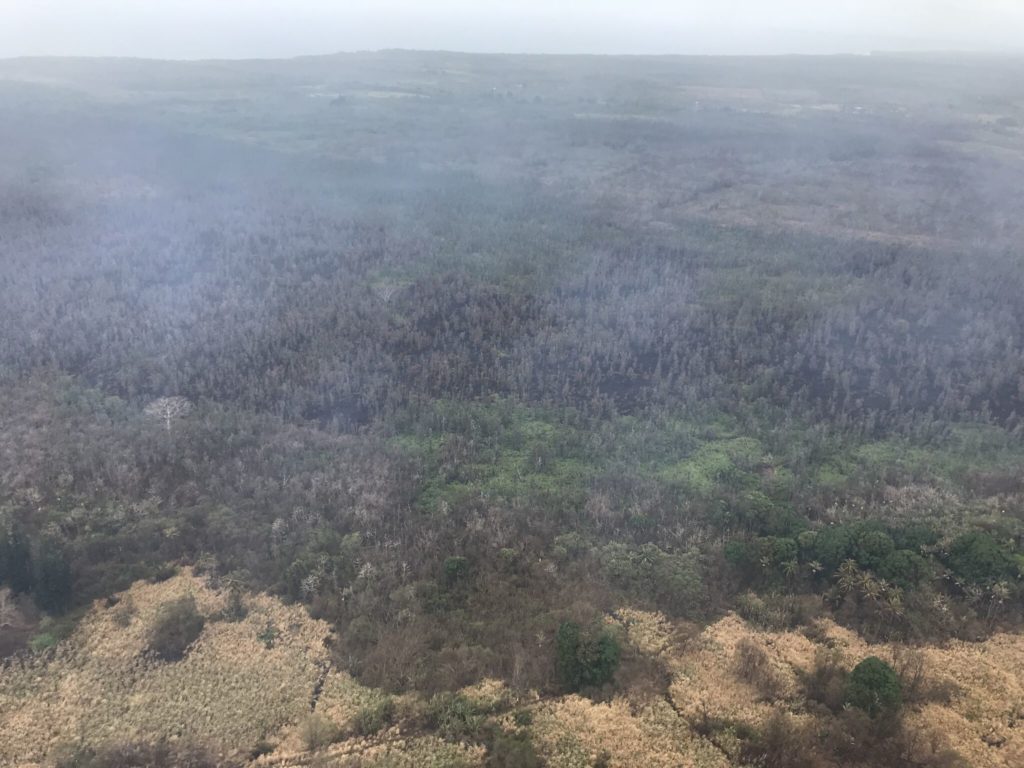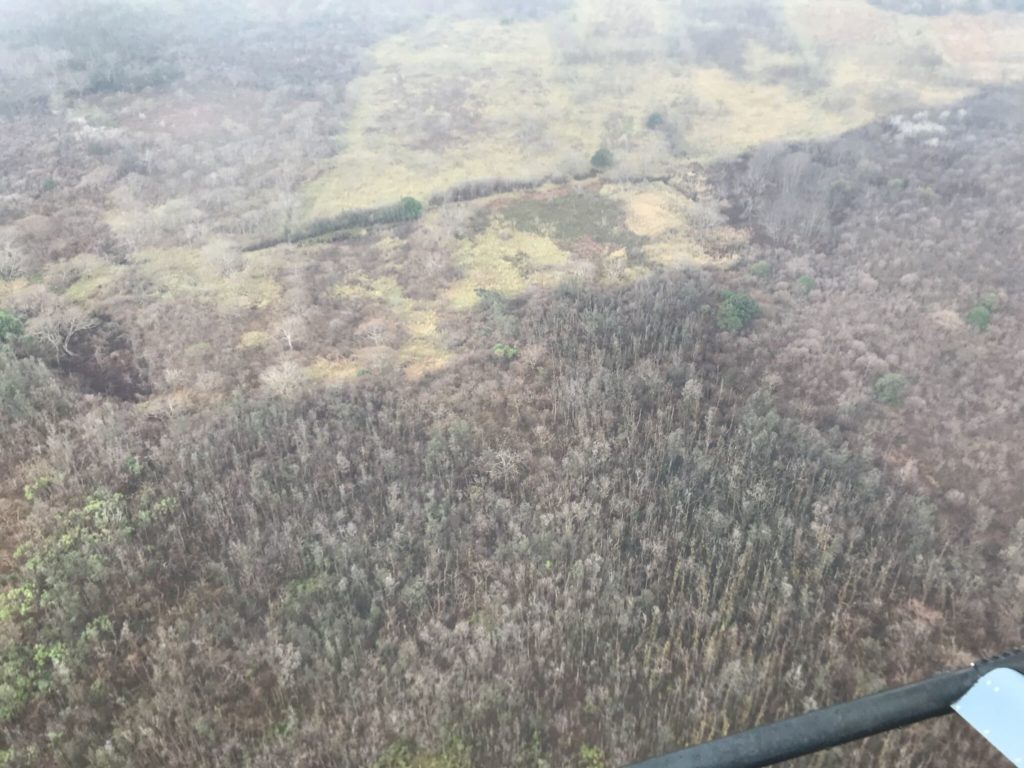Malama Kī Forest Reserve Impacted by Eruption
The Department of Land and Natural Resources (DLNR) reports that forestry managers on Hawai‘i island report one-third to one-half of the total acreage of the Malama Kī Forest Reserve has been impacted by the month-long East Rift Zone volcanic eruption.
Malama Kī is a relatively small reserve, at 1514 acres, and is home to young ʻohiʻa-dominated forest which has served as habitat to sub-populations of native forest birds. Hawaiian honeycreepers, the Hawai‘i ‘amakihi and ‘apapane are resident to this reserve, with previous work showing that Hawai‘i ‘amakihi make up 24-50% of the bird community, despite the high prevalence of avian malaria and avipox virus. These low-land populations of Hawai‘i ‘amakihi have been documented as being uniquely tolerant to avian disease. The Hawaiian hawk, or ‘io is also known to be resident in low-moderate numbers in lower Puna, and the Hawaiian hoary bat, or ʻōpeʻapeʻa is known to occur in relatively low numbers.
According to DLNR Division of Forestry and Wildlife (DOFAW) Hawai‘i island Branch Manager Steve Bergfeld, “Due to current and further expected loss of this forest habitat due to lava inundation, and defoliation due to volcanic emissions in lower Puna, these remnant and sub-populations of wildlife may no longer persist, rapidly decline, or become further fragmented and/or contract in range.” Foresters also indicate there will be a loss in the continuity of research on disease tolerance, sub-population genetics, and the measurable effects of rapid ʻohiʻa death (ROD) to the forest bird community in the reserve and surrounding area. The reserve also serves, in part, as a public year-round hunting area, which may be greatly reduced due to the loss of forest and the effects to feral animals.
In upwind areas, birds are okay and wildlife has been observed within yards upwind of the flows. Anything downwind would face a sulfur dioxide (SO2) hazard but would likely leave the area. Bergfeld explained, “We don’t plan to go catch wildlife and remove them. There is a unique subpopulation of Hawai‘i ‘amakihi in Malama Kī that will be affected and/or lost by the lower Puna eruption.
Site visits conducted so far show a lot of the vegetation downwind of the eruption plume is dead. More than 200 acres of Malama Kī Forest Reserve have also been damaged by wild land fires sparked by the lava flows. Forestry staff have not been able to do accurate assessments of the forest since it is downwind of the fumes a majority of the time.
In the Puʻu Makaʻala Natural Area Reserve, higher up on the slopes of Kīlauea, staff involved in the recovery of the endangered Hawaiian crow, the ‘alala, are keeping a close watch on the eleven birds released back into the mostly-native forest last fall, as well as about 80 ‘alala at the Keauhou Bird Conservation Center (KBCC).
Alala Monitoring Media Clips from Hawaii DLNR on Vimeo.
Jackie Levita-Gaudioso, the DOFAW ‘Alala Project Coordinator said, “We are continuing to monitor the ongoing situation and are prepared and ready. The released birds are in an area where SO2 and ash fallout are being closely monitored, as conditions change. The field team’s continued and ongoing daily observations allow observers to notice changes in the birds’ behaviors and health conditions. Staff on-site, in the release area, are prepared to recapture birds and transport them, if needed.” Field staff and KBCC workers have been briefed on human and bird health and safety measures if ash does reach the center.
While the forest area affected by the current East Rift Zone lava eruption and flows is not large, the loss of remnant and unique flora and fauna is concerning and warrants further assessment as soon as conditions are safe.

















